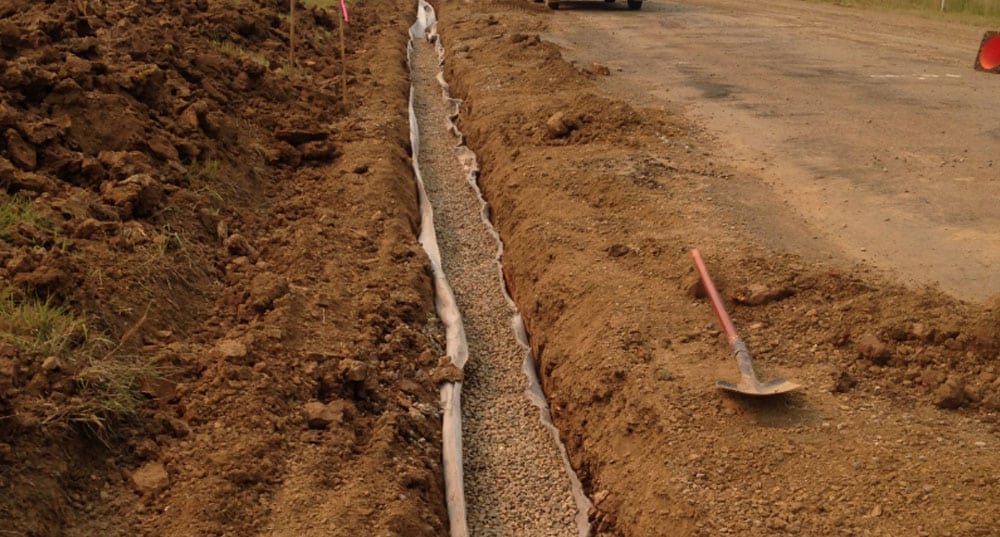
The intent is to capture and remove and free-water entering the pavement materials, particularly in areas where moisture ingress is of concern.
Moisture conditions naturally fluctuate within a pavement structure from the point of construction until equilibrium moisture contents are achieved and can vary from years to decades, depending on the surrounding soil profile, rainfall and drainage conditions.
Where free-water is at risk of entering the pavement, it is generally attributed to:
The use of subsoil drainage is typically characterized by an arrangement of shapes and forms but ultimately takes the form of a trench running adjacent to or beneath the pavement structure. Depending on the source and severity of the moisture ingress, the location and configuration of the subsurface drainage can vary, including:
Conventional subsurface drainage infrastructure is constructed using a permeable material which commonly comprises a nominal size stone to ensure a high void content and free-draining characteristics. Where the drains are to be adopted in areas of structural significance, including underneath pavement shoulders, the use of no-fines concrete is also adopted.
Are environmental regulations, health and safety concerns or potential profit loss a concern right now?
For more information on Global Road Technology or subsurface drainage please contact GRT.
Are environmental regulations, health and safety concerns or potential profit loss a concern right now?
Contact Us Now